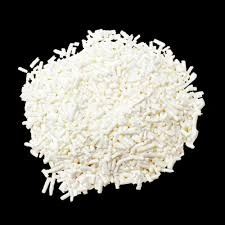
dimethyl disulfide
Understanding Dimethyl Disulfide Properties, Uses, and Safety
Dimethyl disulfide (DMDS) is an organosulfur compound with the formula (CH₃)₂S₂. This pale yellow, volatile liquid possesses a distinctive and pungent odor resembling that of rotten cabbage or garlic. With its unique chemical properties and versatile applications, DMDS has gained attention in various fields, including agriculture, chemical synthesis, and industry.
Chemical Properties
DMDS is characterized by its two methyl groups attached to a disulfide linkage, giving it a molecular structure that is both simple and effective for its myriad applications. With a molecular weight of 94.19 g/mol, it has a boiling point of approximately 164 degrees Celsius and a density of 1.003 g/cm³. Its solubility in water is limited, but it is miscible with organic solvents such as ethanol and ether. This unique combination of properties makes DMDS an important compound in several chemical processes.
Applications in Agriculture
One of the primary uses of dimethyl disulfide is in agriculture, particularly as a soil fumigant. Due to its biocidal properties, DMDS is effective in controlling soil-borne pathogens, nematodes, and weeds. It acts by releasing sulfur compounds that create an inhospitable environment for pests and diseases, promoting healthier crop growth. DMDS is recognized for its ability to enhance soil health while minimizing the residual toxicity associated with some traditional fumigants.
Additionally, DMDS has been employed in the treatment of agricultural waste, contributing to the breakdown of organic matter and reducing environmental impacts. Its role in mitigating pest infestations is crucial, especially in organic farming systems, where chemical pesticides are restricted.
Industrial Uses
dimethyl disulfide

Beyond agriculture, dimethyl disulfide is a valuable intermediate in the chemical industry. It serves as a building block for the synthesis of various sulfur-containing compounds. For instance, DMDS is used in the production of lubricants, plasticizers, and anti-corrosion agents. It is also involved in the formulation of rubber and coatings, where its sulfur content enhances the durability and performance of the final products.
Moreover, in the petrochemical industry, DMDS is utilized as a sweetening agent in the process of natural gas treatment. It helps in removing thiol compounds that impart undesirable odors, ensuring that the final product meets market quality standards.
Health and Safety Considerations
While dimethyl disulfide boasts numerous benefits, it is essential to handle it with care. DMDS can cause irritation to the eyes, skin, and respiratory tract upon exposure. Its pungent odor serves as a warning signal; however, individuals should avoid prolonged exposure to prevent adverse health effects. Personal protective equipment, such as gloves and masks, is recommended when working with this substance.
Environmental safety is another crucial aspect of DMDS usage. Although it is less harmful compared to some alternatives, the application must be managed carefully to minimize the risk of soil and water contamination. Regulatory bodies have established guidelines to ensure the safe use and disposal of DMDS, promoting sustainable practices in agriculture and industry.
Conclusion
In conclusion, dimethyl disulfide is a compound that encapsulates the intersection of utility and responsibility. Its multifaceted applications in agriculture, industrial processes, and environmental management highlight its importance. As industries and farmers seek sustainable alternatives to traditional methods, DMDS offers promising solutions. However, awareness of its properties, safe handling practices, and regulatory compliance remains vital to harnessing its benefits while protecting human health and the environment. As research continues, dimethyl disulfide may play an increasingly prominent role in our quest for sustainable practices across various sectors.
-
Understanding Synthetic Rubber OptionsNewsApr.27,2025
-
Trichloroisocyanuric Acid: Essential for Clean and Safe WaterNewsApr.27,2025
-
Sodium Dichloroisocyanurate: Key to Safe Water TreatmentNewsApr.27,2025
-
Sodium Acid Pyrophosphate: Essential in Modern Food ProcessingNewsApr.27,2025
-
Essential Water Treatment ChemicalsNewsApr.27,2025
-
Denatured Alcohol and Its Industrial UsesNewsApr.27,2025
-
The Versatile Uses of Sodium BicarbonateNewsApr.24,2025
Hebei Tenger Chemical Technology Co., Ltd. focuses on the chemical industry and is committed to the export service of chemical raw materials.
-

view more DiethanolisopropanolamineIn the ever-growing field of chemical solutions, diethanolisopropanolamine (DEIPA) stands out as a versatile and important compound. Due to its unique chemical structure and properties, DEIPA is of interest to various industries including construction, personal care, and agriculture. -

view more TriisopropanolamineTriisopropanolamine (TIPA) alkanol amine substance, is a kind of alcohol amine compound with amino and alcohol hydroxyl, and because of its molecules contains both amino and hydroxyl. -

view more Tetramethyl Thiuram DisulfideTetramethyl thiuram disulfide, also known as TMTD, is a white to light-yellow powder with a distinct sulfur-like odor. It is soluble in organic solvents such as benzene, acetone, and ethyl acetate, making it highly versatile for use in different formulations. TMTD is known for its excellent vulcanization acceleration properties, which makes it a key ingredient in the production of rubber products. Additionally, it acts as an effective fungicide and bactericide, making it valuable in agricultural applications. Its high purity and stability ensure consistent performance, making it a preferred choice for manufacturers across various industries.











